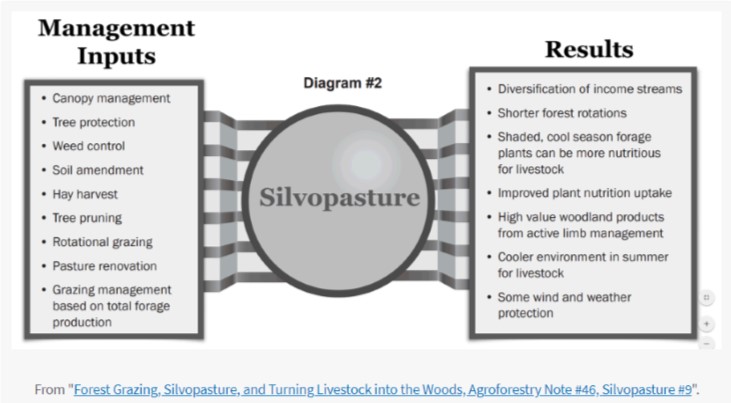Agroforestry is a system that combines trees, shrubs, or perennial vines with other agricultural crops and/or livestock. Diversifying operations can have benefits to the grower to mitigate market fluctuations as well as having diversity on the ground. It allows to better harness natural processes can benefit production as in nutrients, weed control, pest control, and building a diverse underground community to better serve the crops.
Let’s look into silvopasture…
What is silvopasture? It’s the integration of trees and grazing livestock. Utilizing the livestock to control vegetation competition and provide nutrients to the trees reduces mechanical management and synthetic fertilizer. Rotational grazing is utilized so trees aren’t damaged and this provides additional forage for livestock.

This provides short and long term income opportunities while also providing for natural resource benefits. Livestock that can be utilized include cattle, sheep, goats, horses, turkeys, chickens, ostriches, emu, bison, deer, elk, caribou, and others. Tree species that can be used include mast producers, marketable timber, and high quality wood.
Layout is a critical component that must be carefully planned. Providing enough sunlight to grow forage, prevailing winds, animal movements, and infrastructural needs are considerations for planning.
Agroforestry can incorporate the 5 soil health principles of keeping the soil covered, add diversity, keep a living root, minimize disturbance, and the integration of livestock!
